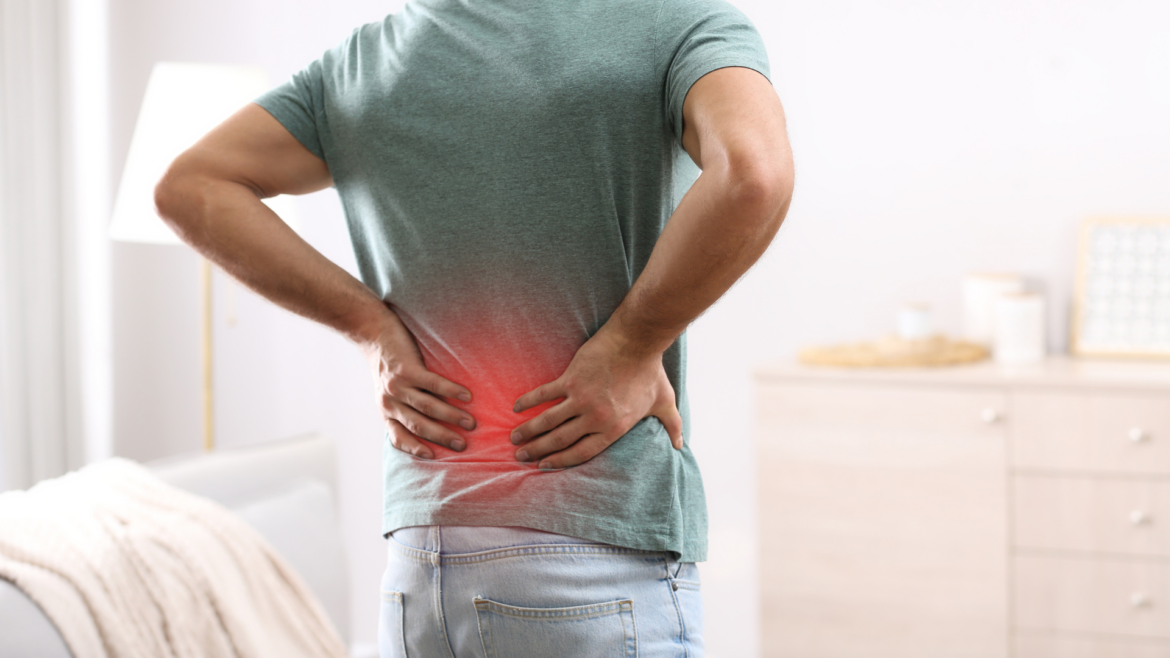Are you experiencing discomfort around your SI joint?
One of the first things to note about the SI joint is that it’s a very common area of referral. This means that when we experience pain in the SI joint, it may not be that actual damage or inflammation is occurring there, rather an area elsewhere could be the issue and it is referring pain into the SI joint.

True SI joint pain can occur, but it’s much more rare. Because of this, we frequently see people who come to us after having been previously treated for their pain, with the focus being targeted directly at the region of the SI joint, only to get temporary relief and the subsequent return of symptoms, because the source of the pain hasn’t been addressed.
Let’s discuss what the SI joint is:
Situated at the junction of the sacrum and the ilium, the SI joint plays a pivotal role in biomechanics by connecting the spine and pelvis. It supports weight transmission, absorbs shock, and facilitates the transfer of forces and movements between the upper and lower body during various activities like walking, running, and lifting.

Importance of the SI Joint:
The SI joint’s stability and mobility are crucial for efficient movement and power generation. Because of its role in holding together the posterior aspect of the bones which make up the ring of the pelvis, stability is its main role. By creating a strong foundation at the back of our body, our spine is able to securely stack atop it. The pelvis is the base upon which our entire trunk rests, afterall! However despite its main role of creating stability, it does offer some subtle mobility which aids in shock absorption of forces traveling up the legs from impact with the ground, to reduce the transmission to the spine. The mobility in the SI joint also contributes to pelvic mobility, including the muscles of the pelvic floor.
Why the SI Joint Moves:
The mobility of the SI joint is vital for adapting to posture changes, gait variations, and movement patterns. These adjustments help maintain pelvic alignment and function, ensuring effective movement in different planes while reducing the risk of injury and strain.
Role in Pregnancy:
During pregnancy, the SI joint experiences increased mobility due to elevated levels of relaxin hormone. This flexibility enables the pelvis to accommodate the growing uterus and changes in the body’s center of gravity. Though this is a positive and necessary change, in those individuals who are already hypermobile, oftentimes this increased pelvic mobility can lead to challenges such as low back pain, hip pain, or pelvic floor pain.

The Stability of the SI Joint:
While the SI joint is one of the body’s strongest and most stable joints, issues can arise when other areas of the body lack optimal function. Stiffness in the thoracic spine, restricted arm swing, and trunk rigidity can lead to compensatory patterns and strain on the SI joint.
Compensations and Referral Patterns:
SI joint pain may sometimes be a referral from the T12/L1 vertebrae or from the hip joint, highlighting the interconnected nature of the body. Addressing mobility issues in adjacent regions like the thoracic and lumbar spine, hips, knees, and feet can help alleviate SI joint dysfunction and discomfort by reducing compensatory patterns and excessive strain on the SI joint.
Foot Pressure and Movement Patterns:
Uneven pressure distribution in the feet can affect the SI joint, as the shifting of our weight alters the forces transmitted through the skeletal structure above, which can lead to compensatory patterns. Being mindful of foot alignment and weight distribution is essential for promoting healthier movement patterns and reducing stress on the SI joint.
Other factors:
Often overlooked, constipation can also play a role in pelvic pain and pressure. With the rectum located directly in front of the SI joint, increased pressure can also contribute to increased SI joint pain. Menstruation can also contribute in a similar way, with increased pressure during different times in the cycle. If you are menstruating and experiencing SI joint pain, it would be worthwhile to observe how your symptoms change through your cycle.
Main Takeaway:
When addressing SI joint pain it is crucial to understand interconnectedness of the body and look beyond the immediate area of discomfort. By focusing on mobility in surrounding regions, you can effectively manage SI joint dysfunction and improve your overall well-being. Professional guidance is helpful in identifying areas of the body which may be contributing to pain in the SI joint region.
Keep in mind, unless you are pregnant, have hypermobility, or have experienced physical trauma to the pelvic or lower extremities (legs), sacroiliac joint pain is less likely to be the primary cause. In this case, it is recommended to investigate areas above and below the site of pain to determine the more probable cause.
What you can do:
- Assess if the pain increases with certain movements
- If you are menstruating, notice if it correlates with any specific part of your cycle
- Does it change based on your bowel movements?
- See a physical therapist with training and experience in looking at the entire body, not only the source of pain. It is important to address the cause and the pain itself.
Stay tuned for more insights and tips on optimizing movement and enhancing your well-being. Your body will thank you for the care and attention you provide.
References:
National Center for Biotechnology Information. (2018). Sacroiliac joint dysfunction. In StatPearls. Retrieved September 30, 2024, from https://www.ncbi.nlm.nih.gov/books/NBK470299/
Cohen SP. Sacroiliac joint pain: a comprehensive review of anatomy, diagnosis, and treatment. Anesth Analg. 2005 Nov;101(5):1440-1453. [PubMed]
Physiopedia. (n.d.). Sacroiliac joint syndrome. Retrieved October 9, 2024, from https://www.physio-pedia.com/Sacroiliac_Joint_Syndrome
Outsources:
https://www.mayoclinic.org/diseases-conditions/sacroiliitis/symptoms-causes/syc-20350747


